Major city facing ‘homelessness tsunami’

Syndey is facing a “homelessness tsunami” as the country battles a cost-of-living crisis.
Scattered throughout Sydney’s most affluent suburbs are makeshifts homes set up on foothpaths, often next to empty buildings.
And as rents continue to climb, an increasing number of people are just one rent rise away from homelessness, experts warn.
NCA NewsWire meets a man who has been living on the streets for the past four years and learns about the tragic but simple way he found himself here.


In Potts Point, surrounded by million-dollar homes and fancy restaurants, there’s a home with no doors or windows.
The makeshift Orwell St home boasts two mattresses, a large tent for storage and about 20 sleeping bags that are loaned to rough sleepers as needed.
Propped on a wall is a framed print that reads “Home is where the heart is”.
On the right side of the camp, the words “Do not do drugs here” are written into the wall.
Abdul Elomar has lived at the encampment since October 2023, but he has been living on the streets since 2020.
His life began to spiral after his son, Omar, was killed. He was just 18 at the time.
Mr Elomar admits his life was far from perfect before then, but he was never homeless.
“I was an addict, I was living in and out of accommodation but I was not homeless,” he says.
“After I lost my son, I can’t even hold a job down for a week. It’s no one’s fault, it’s my fault – but I can’t stop drinking, I turned to drugs, I’ve been to rehab.”
He found himself permanently living at the encampment after another man who lived there offered to share the space.
“There were a few rainy days and he said to me, ‘Come stay here’,” Mr Elomar says.
While the improvised home makes the people who live there vulnerable to theft, the spot protects them from the elements.
The awning blocks the rain and sun, and the narrow street acts like a wind tunnel, which takes the sting out of a 40C day.
Mr Elomar describes the makeshift home as “Wayside After Hours”, referencing the not-for-profit mission and community centre just a street over.
“We get all these people who have been out for four or five days and they have nowhere to go,” he says.
“We’ve got so many sleeping bags, and people will come and ask us for a sleeping bag and we’ll give them one.”
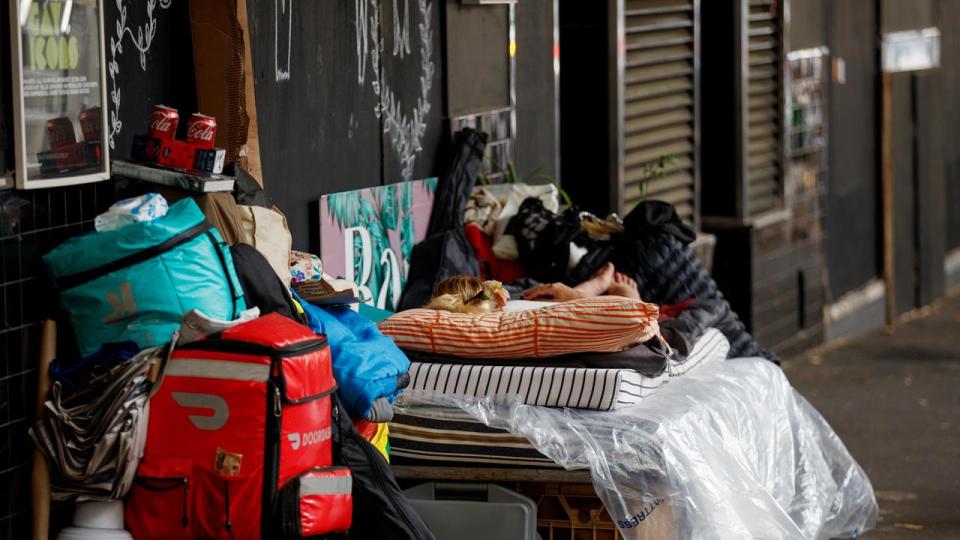
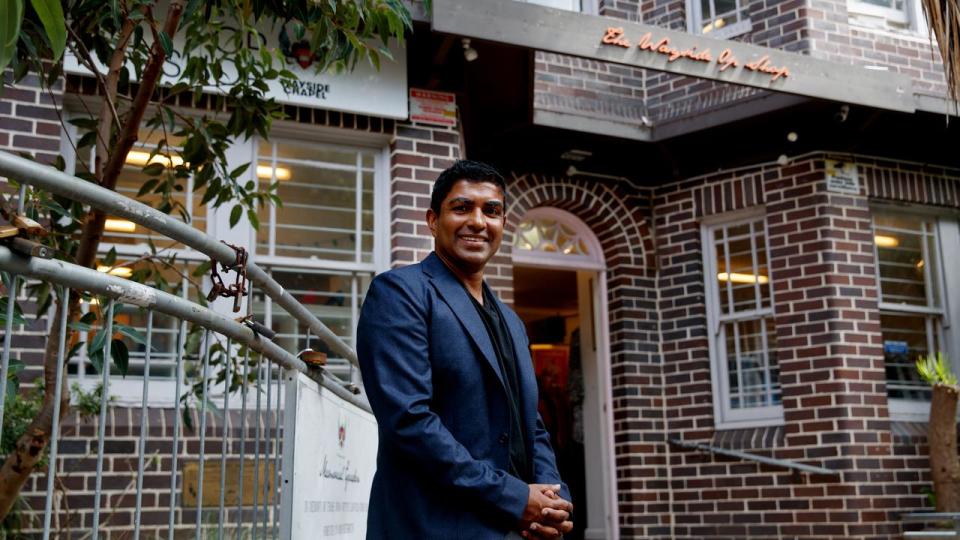
Encampments like the one on Orwell St are part of a growing trend of homelessness and housing insecurity spurred on by growing rents, rising cost of living, and a crisis in the availability of temporary housing in NSW.
An influx of more people needing help has increased pressure on community programs that offer food and care.
In the past quarter, Wayside Chapel chief executive and pastor Jon Owen has seen “almost a doubling” of people seeking food, basic amenities like toiletries, socks and underwear and emergency support, especially housing.
“We’re seeing a lot more people who have been holding it together for 12 to 18 months and they haven’t been able to sustain it,” he says.
In the 12 months to September 2023, the Wayside Chapel recorded a 64 per cent increase in daily visitors, an 88 per cent increase in the amount of food provided and a 53 per cent increase in clothes, underwear and socks provided.
It’s also reported a 126 per cent increase in the instances of care co-ordination required by visitors.
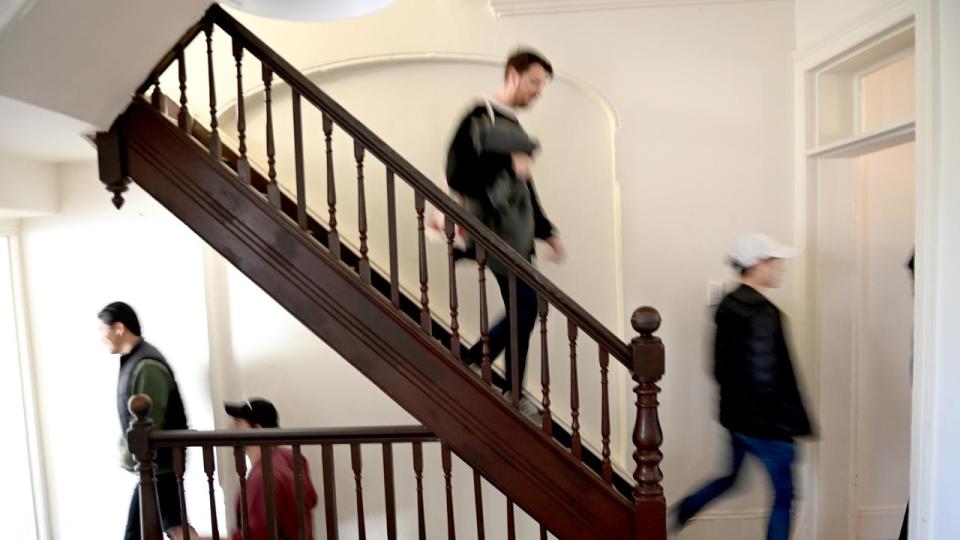
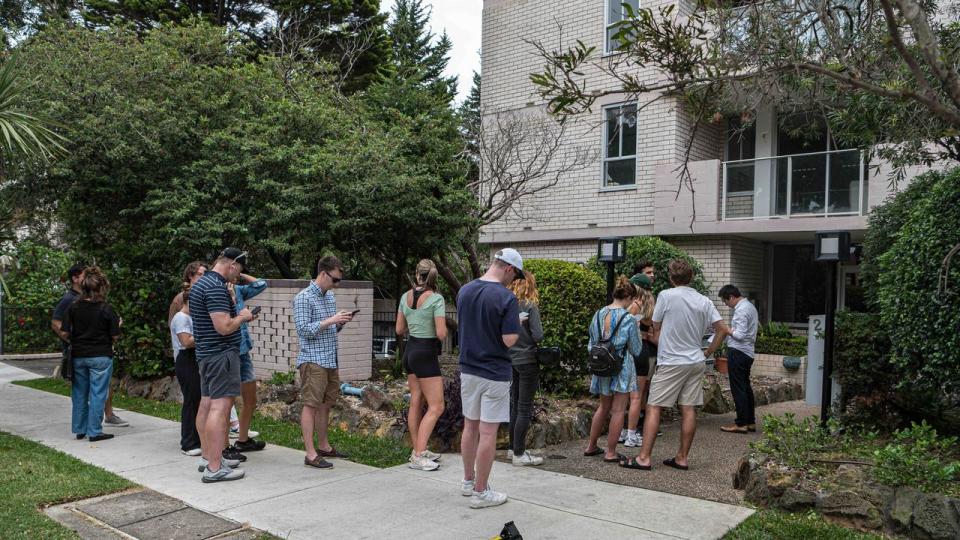
Mr Owen knows most of the Wayside community on a first-name basis, including those who live at the Orwell St encampment.
He says he’s noticed a “growing small number” of encampments increasing in the affluent suburbs of Potts Point, Darlinghurst and Kings Cross as people “congregate for safety and security”.
“We lose a lot more people in this time of the year than we do in winter,” he says.
Warm nights, which increases the rates of rats roaming the street, mean the homeless aren’t able to get a good, or safe, night’s sleep and instead attempt to nap during the day when the heat and humidity are at its worst.
Mr Owen says they can resort to using alcohol as a sleep aid, resulting in severe dehydration.
“It’s a really critical time of year, particularly as services like ours have been under sustained pressure,” he says.
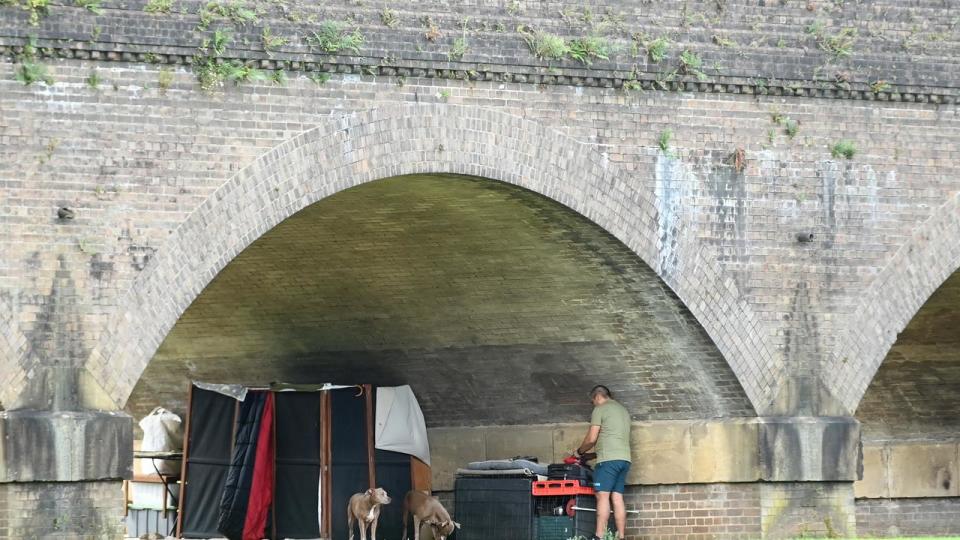
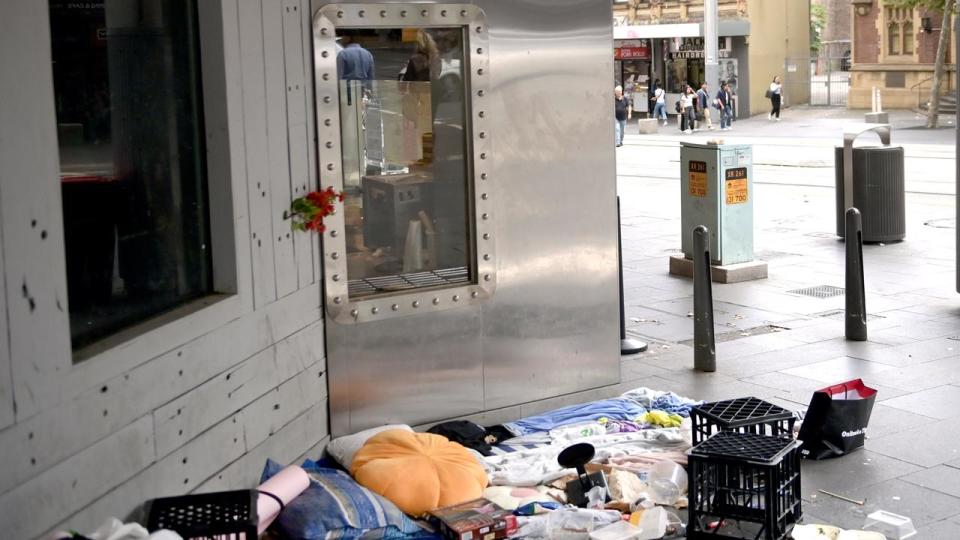
According to the most recent data, the number of people rough sleeping in NSW is growing.
Figures from the 2023 NSW street count recorded 1623 people sleeping rough between February 2 to 27, 2023 – a 34 per cent year-on-year increase.
The City of Sydney local government area reported the third highest increase in figures, with numbers increasing by 23 per cent from 225 to 277.
However, Homelessness NSW chief Dom Rowe says visible homelessness – like rough sleepers – is merely the tip of the iceberg, with NSW facing a “homelessness tsunami”.
“For every person who sets up camp in a park, there are dozens who are forced to remain in a violent or unsafe home or spend their days looking for the next couch to sleep on,” Ms Rowe says.
However, while frontline providers, like emergency or temporary housing services are already at “breaking point”, many expect the demand will only increase, Ms Rowe says.
“An increasing number of people are just one rent rise away from homelessness because of rising costs, vanishing rental availability,” she says.
“If two people walk into a frontline homelessness provider in NSW needing temporary accommodation today – whether it be in inner Sydney or the regions – one of them will be turned away.”
NSW Treasurer Daniel Mookhey warned this week that Sydney was facing a San Francisco-like housing shortage.
In San Francisco, a lot of middle-class people are lining up at soup kitchens and homeless shelters as they are unable to pay for both rent and food, he says.
“That is the fate that awaits when you have a city that doesn’t think about how it’s going to grow,” he told 2GB.
The NSW government’s plan to combat the issue is widespread high-rise rezoning.
Under the plan, six-storey blocks will be allowed within 400m of more than 30 of the city’s train stations.


